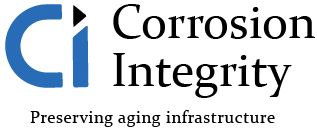Pipe and Tank Inspection
Guided Wave
Guided Wave Radar (GWR) is a level measurement technique that uses a probe to guide microwave pulses to the surface of a liquid or solid, and then measures the time it takes for the reflected signal to return. This time difference, based on the principle of Time Domain Reflectometry (TDR), is directly proportional to the level of the material being measured.
Phased Array (PAUT)
Phased Array Ultrasonic Testing (PAUT) is a non-destructive testing (NDT) technique that uses a multi-element ultrasonic transducer to inspect materials for defects. It allows for the steering and focusing of ultrasonic beams, providing detailed imaging and precise flaw detection.
Ultrasonic Thickness (UT)
Ultrasonic thickness measurement (UTM) is a non-destructive testing method used to inspect the metal thickness of ship hulls, piping and structural steel. Thickness measuring is essential across many industries to monitor corrosion, erosion and damage.
Eddy Current
Eddy current testing uses electromagnetic induction to identify defects in the tubing. A probe is inserted into the tube and traverses the entire length of the tube. Eddy currents are generated by the electromagnetic coils in the probe and monitored simultaneously by measuring probe electrical impedance.
Magnetic Flux Leakage (MFL)
Magnetic Flux Leakage (MFL) testing is a non-destructive testing (NDT) method used to detect flaws, corrosion, and material loss in ferromagnetic materials, particularly steel. It works by magnetizing the material, and any defects cause a magnetic field to “leak” out, which is then detected by sensors.
Magnetic particle testing (MPT)
Ultrasonic thickness measurement (UTM) is a non-destructive testing method used to inspect the metal thickness of ship hulls, piping and structural steel. Thickness measuring is essential across many industries to monitor corrosion, erosion and damage.
